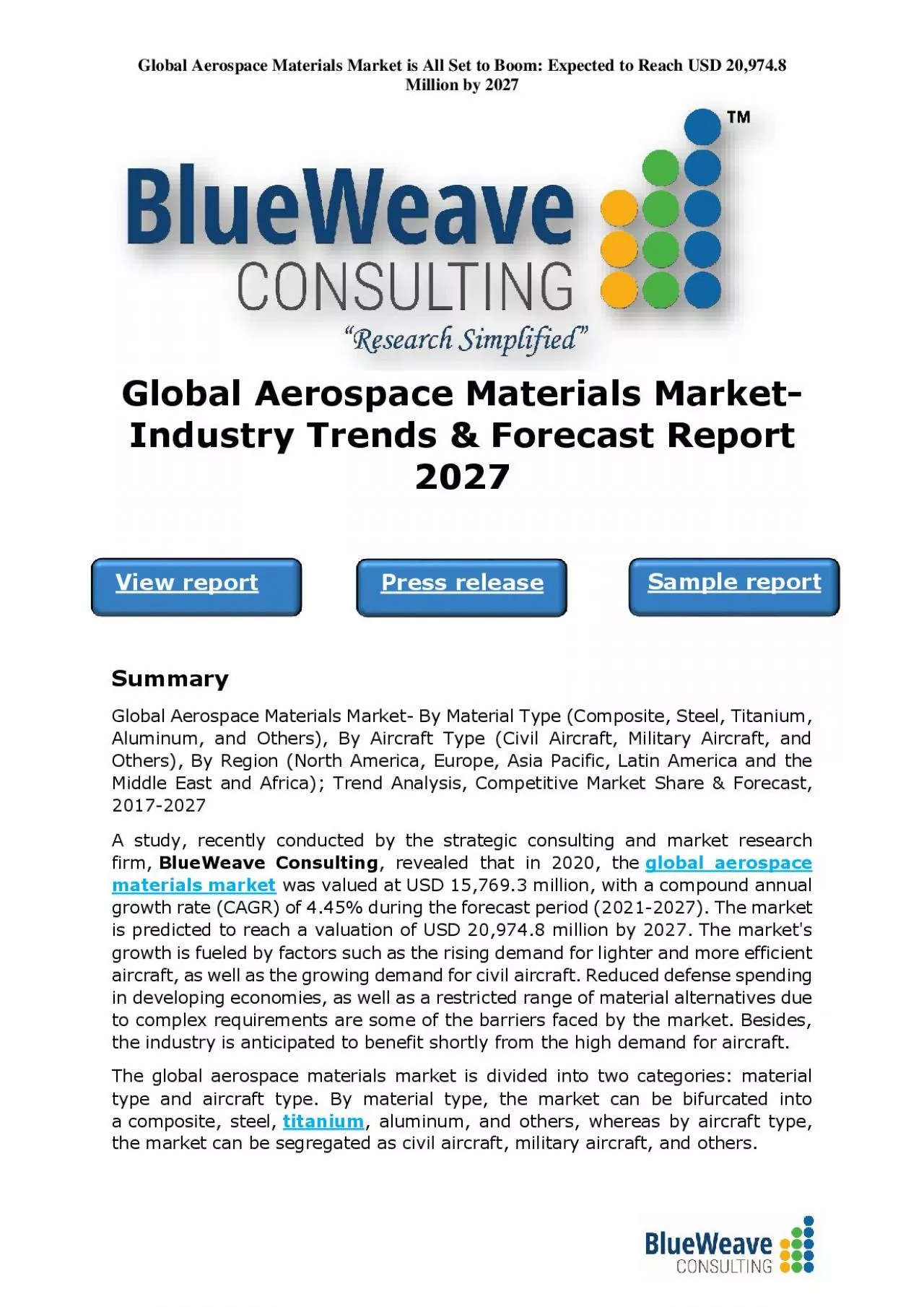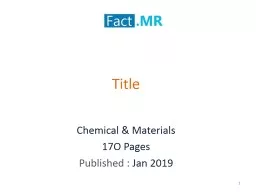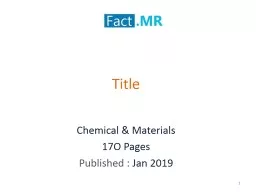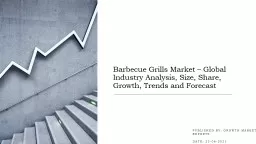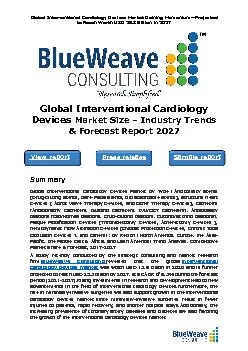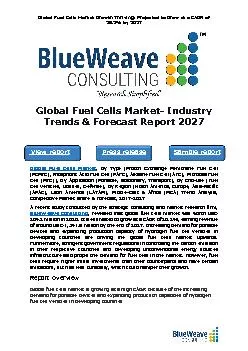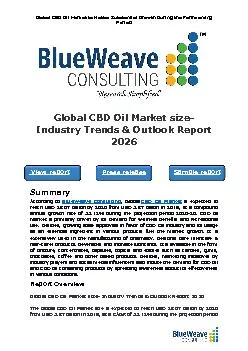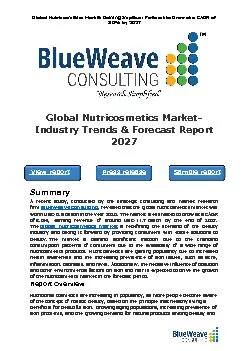PDF-Global Aerospace Materials Market- Industry Trends & Forecast Report 2027
Author : Paritosh | Published Date : 2021-04-28
the global aerospace materials market was valued at USD 157693 million with a compound annual growth rate CAGR of 445 The market is projected to reach a valuation
Presentation Embed Code
Download Presentation
Download Presentation The PPT/PDF document "Global Aerospace Materials Market- Indus..." is the property of its rightful owner. Permission is granted to download and print the materials on this website for personal, non-commercial use only, and to display it on your personal computer provided you do not modify the materials and that you retain all copyright notices contained in the materials. By downloading content from our website, you accept the terms of this agreement.
Global Aerospace Materials Market- Industry Trends & Forecast Report 2027: Transcript
Download Rules Of Document
"Global Aerospace Materials Market- Industry Trends & Forecast Report 2027"The content belongs to its owner. You may download and print it for personal use, without modification, and keep all copyright notices. By downloading, you agree to these terms.
Related Documents

